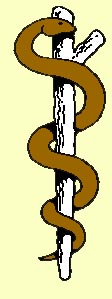
The most common cause of headache is muscle spasm. The tension headache represents the best known example. Generally, the tension headache is band-like with the discomfort felt across the forehead. It can be produced by eyestrain associated with prolonged fine detail work, bright sunlight, and stress. It is relieved by rest and relaxation. Additionally, treatment with tylenol, asprirn or other mild analgesics can be used. Massage may be helpful.
A cause of headache that has recently come to the attention of medical caregivers is the caffeine withdrawl headache. Seen in patients hospitalized for surgery and not provided their usual several cups of coffee a day, these individuals became troubled with headache. The headache is relieved by providing caffeine to the patient.
Headaches caused by structural abnormalities include non-malignant intracranial (inside the skull) tumors such as the meningioma which may cause headache of a chronic nature for many years before being discovered by using a CT or MR scan of the head. These are usually easily treated with surgery. Malignant tumors, either primary to the head or those that have migrated to the brain or other aspect of the head from more remote locations often cause headache. These are treated using radiation therapy to decrease their size and sometimes surgical removal is an option.
Vascular or blood vessel abnormalities including aneurysms (sack like expansion of the blood vessel's wall) or a growth of blood vessels known as an arterio-venous malformation cause headache which may at times be chronic or otherwise sudden in onset. These are almost always treated with a surgical procedure to remove the abnormal blood vessel structure. Bleeding inside the skull presenting as subarachnoid or subdural hemorrage may occur spontaneously or as the result of injury and is usually associated with headache.
Medication side effects is a common cause of headache and should always be considered when evaluating the patient presenting with the complaint.
Sinus infections and diseases of the teeth and jaw are also causes of headache.
The classic headaches such as migraine types and cluster headache with their typical pattern of presentation are usually readily recognized by the physician. New medications are available to treat the migraine type headache and any patient suffering with that disease can certainly be made more comfortable by medical attention.
There are many other causes of
headache
that the doctor considers when evaluating the patient such as poorly
vented heating systems and allergies, both representing a
seasonal
variety. It is highly recommended that a discussion of any
headache
problem be had with your doctor so that serious illness can be
discovered
or eliminated from consideration and treatment can be offered.
JAMA Headache Site http://www.ama-assn.org/special/migraine/support/educate/types.htm
Cluster Headache http://www.upstate.edu/neurology/haas/hpcldx.htm
Some Useful Info "The Headache
Clinic"
http://www.halcyon.com/headache/medication.html
